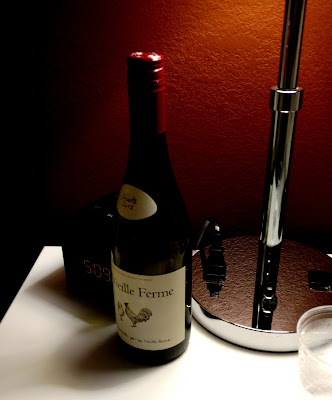 |
| My last studio was neater than my current one. I wonder why. |
I’ve had studios in my home and in a commercial space. Neither is inherently better. It’s just a question of what works best for you.
Sometimes the decision requires no thought. If there’s no room in your house, a rented studio space is probably cheaper than moving. I started painting professionally in a corner of my kitchen. In some ways that was the most pleasant workspace I ever had, since it was light and bright and I could easily keep an eye on the kids. But it didn’t take long to outgrow.
The
Hungerford Building in Rochester is a mixed-use building that is home to more than a hundred working artists. I had a studio there long before it had a
First Friday event, but it was still open to the public. My workspace was large, with high ceilings, ample north-facing windows and good parking. I met many fine artists there. There were, of course, all the usual amenities.
On the other hand, some residents were careless with the security codes. That meant that the building was never truly secure. It was in a marginal neighborhood. I soon realized that it wasn’t safe after dark. At the time, working at night was a necessity. I had young children who shortened my daylight work options considerably.
There was also the question of access. I was doing art festivals and fairs. My studio was on the fourth floor. This was accessible by freight elevator, but there was still a lot of trundling before I got my work, my booth and my tent down to the commercial loading dock. That freight elevator was the only option for visitors, too. It was cumbersome and hard to use.
There was also the rent, which added about $6000 a year to my fixed costs.
 |
| One of the downsides of a home studio is that you will end up storing paintings everywhere. This is the bedroom in our former home. |
We bought our current house for the studio. This is my fourth home-based workspace. My husband works from home too, so in some ways you could describe this house as a large atelier with attached living quarters. It’s on Route 1, which is Maine’s commercial drag, and it has a small parking lot.
Owning my workspace is a financial advantage in the same way as home ownership. It also gives me greater flexibility in how I use the space. I can work whenever I want. There’s a nice kitchen. There’s a backup server and a good computer network. I can bring the
elderly Jack Russell terrier to work with me. And of course, there’s no commute.
There is, of course, a downside: distraction.
“After each big painting I usually clean my studio before starting another painting. I got as far as dumping the dirty water,”
Christine Waara wrote yesterday. “While dumping water in the laundry room I started doing laundry. While gathering laundry, I came across some letters I’ve been meaning to answer. Went to find some note cards to answer the letters and saw that the dehumidifier was full. Dumped the dehumidifier and… squirrel!”
 |
| Your kids will wander in and out of your home-based workspace. That’s usually a good thing. |
I have a few tricks to manage my transition from hausfrau to artist. I leave my next piece on my easel, to remember where I’m going and what I was thinking about. I work regular hours whenever I can. Human beings are programmed for routine. Our brains settle down faster when we use them the same way at the same time every day.
Home-based workers end up being the gophers for our families, because our schedules are flexible. People stop by because they think we’re ‘free.’ But, overall, I think there is less of this than in a communal workspace, which sometimes suffer from excessive conviviality. And I never have meetings. The dog can’t talk.





















